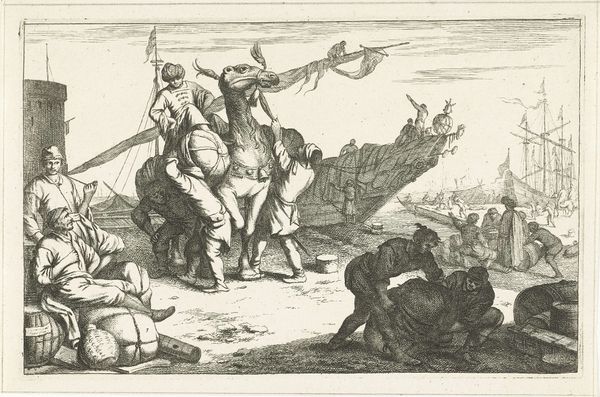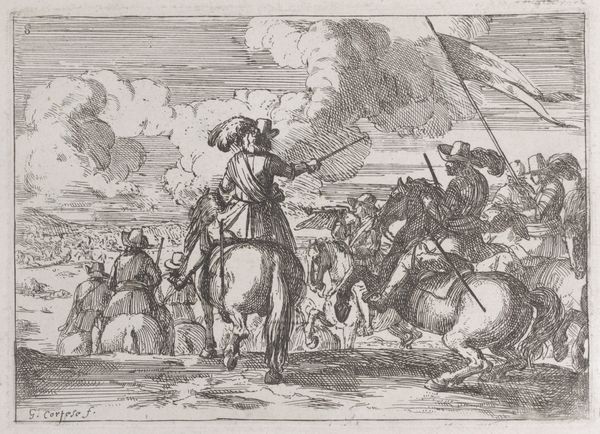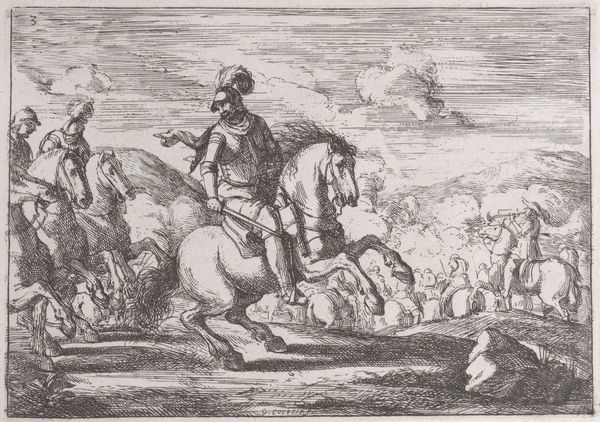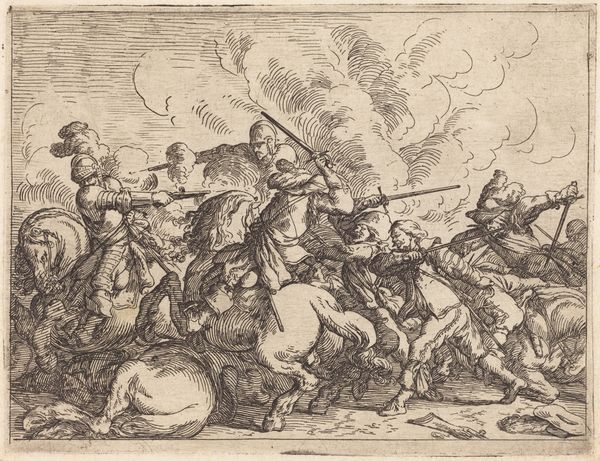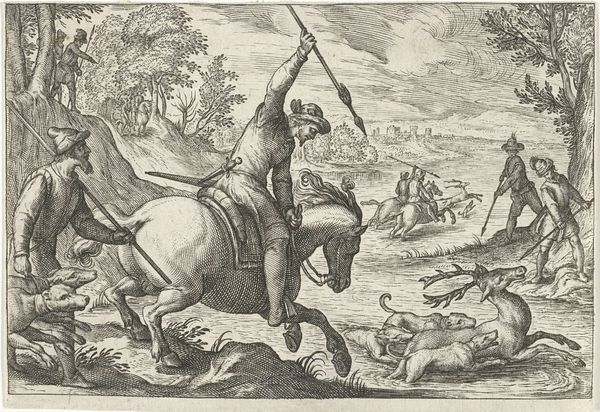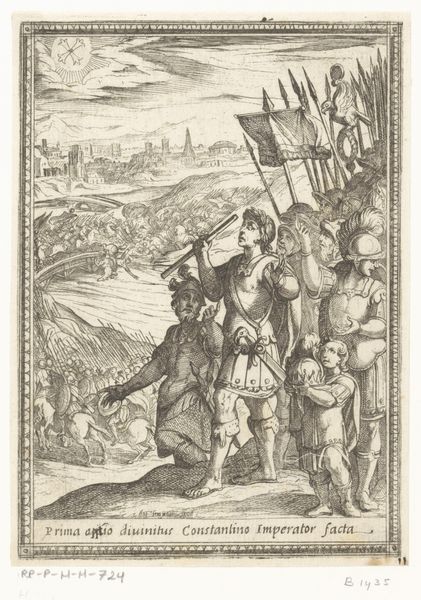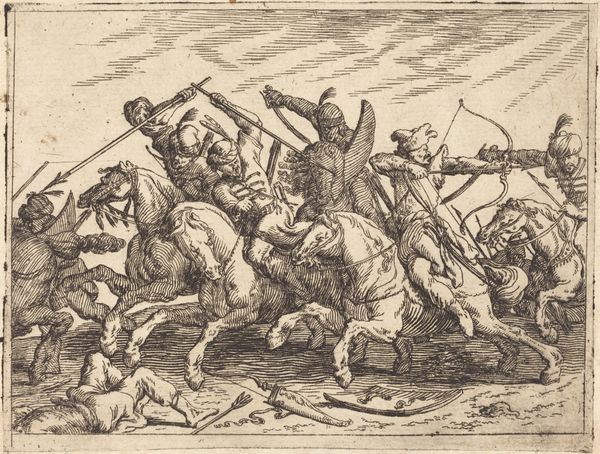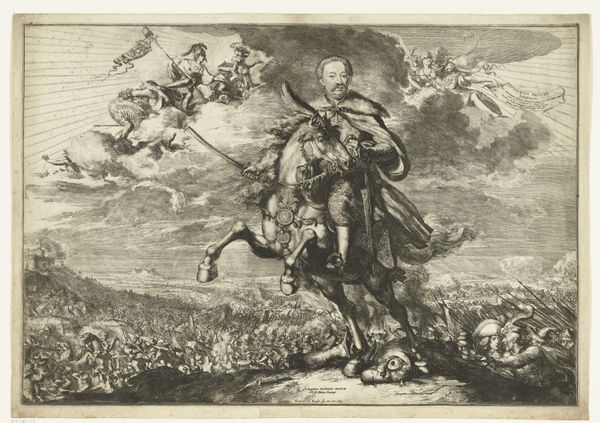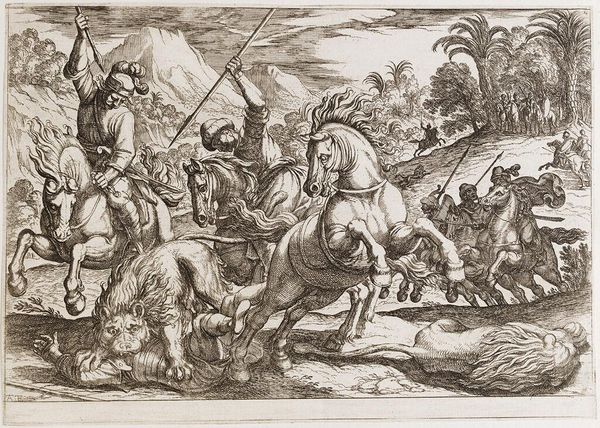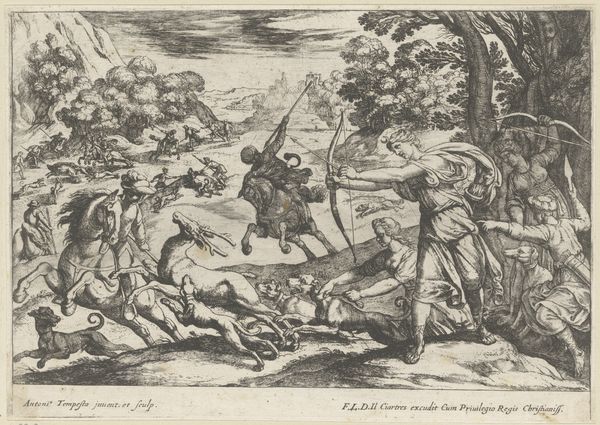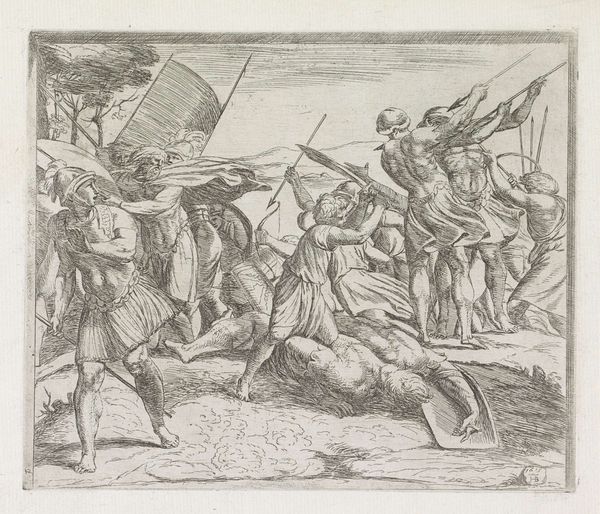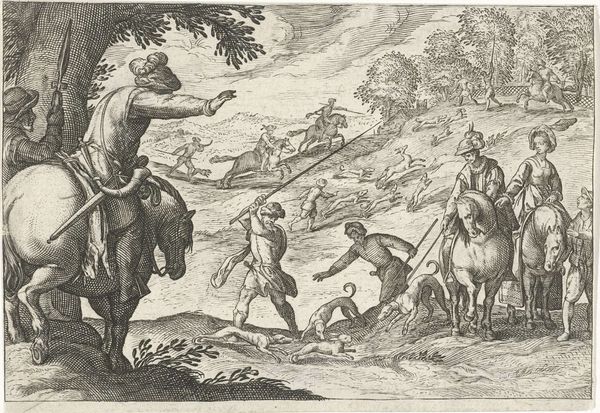
print, etching
#
narrative-art
#
baroque
# print
#
etching
#
landscape
#
figuration
#
history-painting
Copyright: National Gallery of Art: CC0 1.0
Curator: We’re looking at "Capricci di varie battaglie" by Johann Wilhelm Baur, created around 1635. It's an etching, part of a series, depicting scenes of battles. Editor: The immediate impact is quite striking, actually. It’s so dynamic, filled with figures, yet it retains a strange stillness because of the monochromatic palette. It's a chaotic scene, but within a controlled composition. Curator: It’s interesting that you note the dynamic quality. Baur worked during the Baroque era. There was indeed growing fascination in Europe at this time with portraying historical battles and military power through the medium of print, making such imagery accessible to a broader public, often to reinforce a patron's or state’s image of strength. Editor: Right. Structurally, notice how the diagonal sweep of the land and the cloud formations lead your eye from left to right, finally resting on the banner with its strange emblem—almost like a fantastical creature. Curator: That emblem, a winged lion holding a flower, certainly is curious. The narratives surrounding military conflict during the Baroque often integrated symbolism and allegory; it might reflect on the patron's virtues, a rallying symbol for troops, or allude to some contemporary event, filtered through a classical motif. Editor: The lines, rendered with etching, vary in weight and density. This creates visual texture and also distinguishes depth, moving back from the foreground soldiers into that swirling, distant battle. Curator: I am struck by how a close examination reveals an engagement with social and political ideas in this Baroque scene. What appears at first glance to simply portray soldiers, smoke, and clouds becomes deeply engaged with historical memory and cultural symbols when observed carefully. Editor: It’s a superb example of how formal elements—the lines, composition, texture—contribute to not just the visual impact but the underlying narrative as well. Curator: Ultimately, Baur's etching provides a window into the world of the 17th century and illuminates how artists utilized warfare for cultural messaging. Editor: A potent reminder that the interplay of line and form can construct an entire worldview, indeed.
Comments
No comments
Be the first to comment and join the conversation on the ultimate creative platform.
